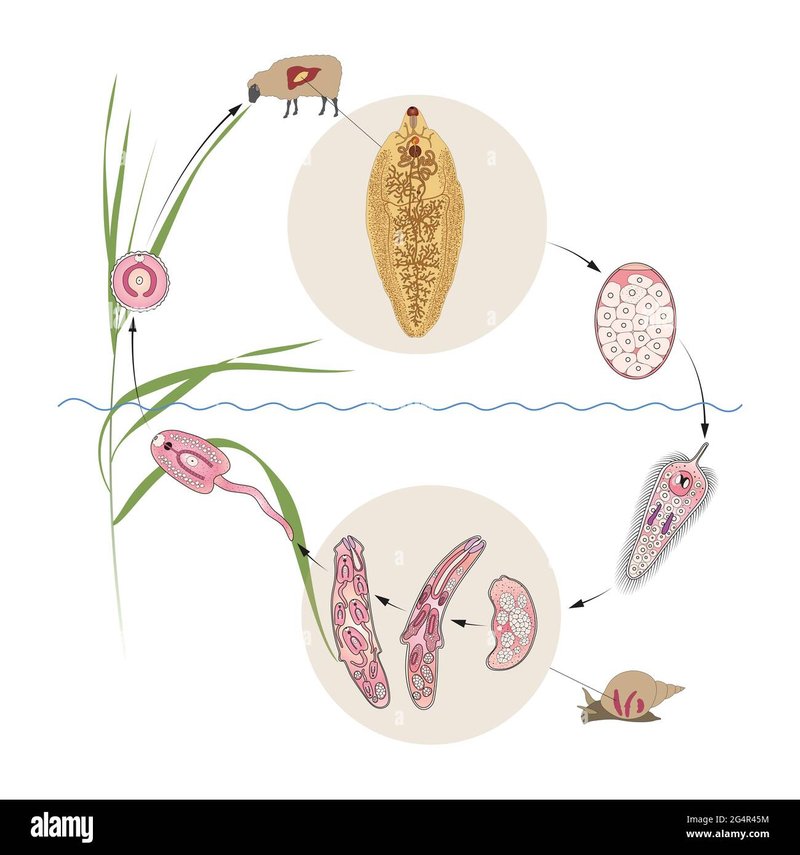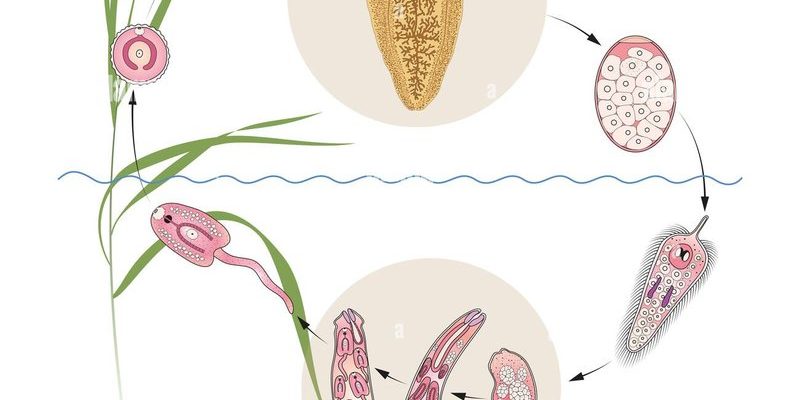
Imagine a life cycle that seems like a game of musical chairs, where the liver fluke hops from one host to another. It starts in the environment, then goes through several intriguing transformations and hosts. This process not only affects the fluke but also the animals it infests. In this article, we’ll explore each stage of the liver fluke’s life cycle, how it behaves, and why it matters.
What is a Liver Fluke?
To kick things off, let’s get acquainted with the liver fluke itself. These small worms are part of a larger group called trematodes, which are known for their flat, leaf-like shape. They primarily target the liver of mammals, including sheep, cattle, and even humans. The fluke has special adaptations that allow it to cling to the liver and thrive, making it a formidable parasite.
You might be wondering why anyone should care about liver flukes. Well, they can cause diseases like fascioliasis, which leads to severe liver damage in infected animals. This, in turn, affects farming and food supply. So, understanding the liver fluke’s life cycle can help in managing its impact on livestock and preventing its spread.
The Life Cycle Stages of the Liver Fluke
The life cycle of the liver fluke can be divided into distinct stages, each with its own unique characteristics. Let’s break it down step by step.
1. Eggs in the Environment
The journey of a liver fluke begins with eggs. Adult flukes lay their eggs in the bile ducts of their host, which are then expelled into the environment through feces. Here’s where it gets interesting: these eggs need water to hatch. Once in a wet environment, they develop into larvae, specifically a stage known as miracidium.
*Key Points:*
- The eggs can survive in moist soil or water for several months.
- Miracidia are free-swimming larvae that emerge from eggs.
- They are attracted to specific snail hosts to continue their life cycle.
2. The Snail Host
Once the miracidium finds a suitable freshwater snail, it burrows inside to transform into another larval stage, called a sporocyst. Inside the snail, the fluke undergoes a magical transformation, reproducing asexually and producing more larvae called rediae. These rediae eventually turn into free-swimming cercariae.
You might be thinking, “Why the snail?” The snail serves as a crucial host where the liver fluke can grow and multiply. It’s like the fluke’s first home before it sets out on its next great adventure.
*Key Points:*
- Snails are vital for the fluke’s survival and multiplication.
- Cercariae are the next stage that leaves the snail to find a new host.
3. Cercariae and the Second Host
Once the cercariae are released from the snail, they swim in water looking for a new host, usually a grazing mammal like a cow or sheep. When they encounter their potential host, these larvae attach themselves to the skin or are ingested when the host grazes in contaminated areas.
This stage is crucial because it marks the transition from aquatic life to living within a mammalian host. Once inside, the cercariae transform into juvenile flukes called metacercariae, which migrate to the liver.
*Key Points:*
- Cercariae can infect various mammals, including humans.
- Attachment to the host marks the beginning of a new stage in the life cycle.
4. Adult Flukes in the Liver
After migrating to the liver, the metacercariae mature into adult flukes. This is where they settle in and begin their life as parasites. Adult flukes can live for several years, laying thousands of eggs daily, which perpetuates the cycle.
Here’s the thing—while they benefit from the host, they can also cause significant harm. Adult liver flukes can damage liver tissue, leading to inflammation and other health issues in the host. This is why monitoring and controlling liver fluke populations is critical in agriculture.
*Key Points:*
- Adult flukes can produce thousands of eggs, continuing their life cycle.
- Infection can lead to serious health issues in the host.
Behavior and Impact of Liver Flukes
Now that we’ve explored the life cycle, let’s dive into how these flukes behave and the impact they have on their hosts.
Adaptations for Survival
Liver flukes have evolved several adaptations that help them survive their journey through different hosts. For instance, their flat shape allows them to cling to liver tissue, and they have specialized mouthparts for feeding. They also produce a thick protective cuticle to help them withstand the harsh conditions inside their hosts.
These adaptations are crucial, enabling liver flukes to thrive in environments that would otherwise be inhospitable. It’s fascinating how nature equips these creatures for survival, don’t you think?
*Key Points:*
- Adaptations include a flat shape for clinging to tissue.
- Protective cuticles help them survive harsh conditions.
Health Implications for Hosts
Infected animals can experience a range of health issues, from mild discomfort to severe liver damage. Symptoms might include weight loss, fever, anemia, and even death in extreme cases. This not only affects the health of individual animals but can also impact entire herds, leading to economic losses for farmers.
You might be wondering why this matters to us as consumers. Well, when livestock is affected, it can impact the food supply chain, leading to higher prices and lower availability of meat products.
*Key Points:*
- Infection can lead to serious health problems in animals.
- The economic implications can affect meat prices and availability.
The life cycle of the liver fluke is a complex journey that involves multiple hosts and fascinating transformations. From eggs in the environment to adult flukes in the liver, every stage is geared towards survival and reproduction. Understanding these stages helps us appreciate the balance of ecosystems and the importance of managing parasite populations for the health of livestock.
By shedding light on the life cycle and behavior of the liver fluke, we can take significant steps to prevent its spread and protect both animal and human health. So next time you think about parasites, remember the intricate journey of the liver fluke and the impact it has on the world around us.

